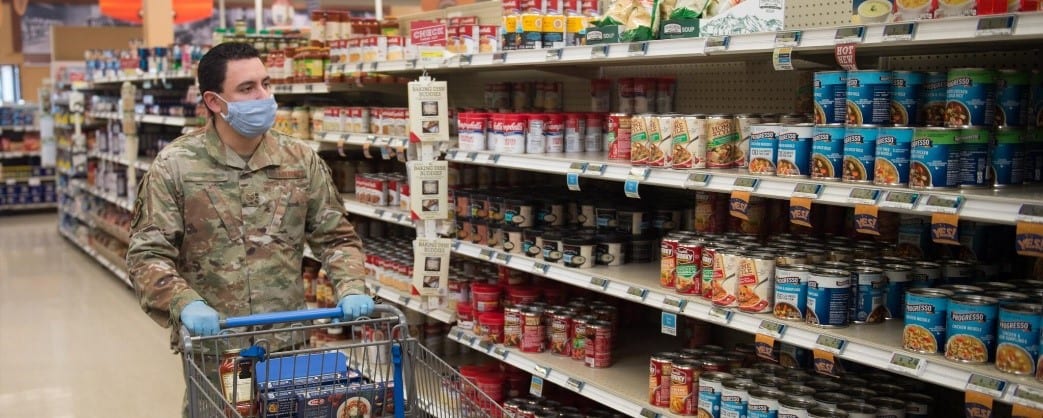By: Jennifer Rea, PhD.
The first hurricane I experienced was when my husband and I were stationed in Jacksonville, North Carolina. Growing up in the Midwest, hurricanes were not the natural disaster to worry about. Instead, we prepared for tornadoes. Due to our unfamiliarity with hurricanes, my husband I were totally unprepared for the upcoming destruction of Hurricane Arthur.
When Hurricane Arthur , a Category 2 hurricane, hit eastern North Carolina (July 3rd, 2014) our perspectives were completely shaken. We were blown away by the devastation the hurricane brought on.
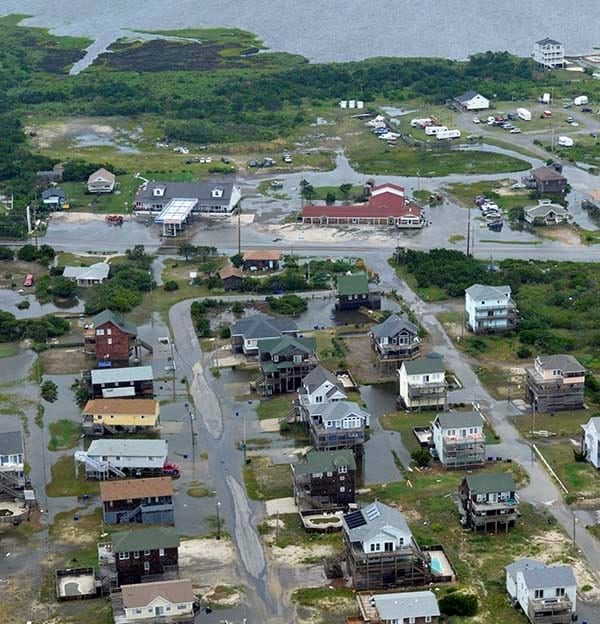
Photo of Hatteras Island, NC on July 4, 2014. Cover image and logo used with permission by CarolinaCountry.com
With winds peaking at 100 mph, damage from the hurricane was limited to scattered debris and flooded roads , and though 44,000 power outages were reported and widespread flooding occurred; fortunately, no deaths or serious injuries were reported.
Disaster Preparedness Among Americans
According to Bullock, Haddow, & Coppola, (2017), “preparedness… seeks to improve the abilities of agencies and individuals to respond to the consequences of a disaster* event once the disaster event has occurred” (p. 102).
*A disaster is a non-routine event that exceeds the capacity of the affected area to respond to it in such a way as to save lives; to preserve property; and to maintain the social, ecological, economic, and political stability of the affected region (Pearce, 2000).
So, what does disaster preparedness look like?
Studies suggest three common components of disaster preparedness:
- Basic necessities, such as a three-day supply of water and nonperishable food, a battery-operated radio with working batteries, and a flashlight with working batteries
- A written household emergency evacuation plan; and
- Prescription medication supply for at least three days.
Similar to my husband and I many individuals and families around the world are unprepared for natural disasters and emergencies. That is, despite the many natural disasters that are expected in the U.S. every year, “many people do not adequately prepare, exposing themselves and their property to the perils of natural disasters” (Annis et al., 2016, p. 2).
In fact, two-thirds (65%) of households reported no disaster plans or having plans that are not adequate (National Survey, conducted by the National Center for Disaster Preparedness at Columbia University; Sury et al., 2016).
FEMA (Federal Emergency Management Agency) found less than half of Americans are familiar with local hazards, fewer than 40% have created a household emergency plan and discussed it with family members, and only 52% reported having disaster supplies at home (FEMA, 2014).
Characteristics Shaping Disaster Preparedness
So, what is causing many Americans to be unprepared for a natural disaster or emergency? Kyne and colleagues (2020) share five reasons for unpreparedness among individuals and families:
- Insufficient importance on disaster preparedness
- Insufficient time to prepare,
- Lack of information on how to prepare,
- Insufficient financial resources to prepare, andInsufficient knowledge and motivation.
Many of these discrepancies are highly influenced by socio-demographic characteristics, such as age, marital status, children, and income (Kyne et al., 2020).
Below are research findings, from Kyne and colleagues (2020), highlighting parallels among socio-demographic characteristics and lack of disaster preparedness:
- Older adults recognize the importance of disaster preparedness, however, are the most vulnerable, especially those in long-term care.
- Those with poor health, disabilities, and chronic illnesses are at greater risk for negative health effects following a disaster.
- Inadequate healthcare, disparities in access to care, and quality of care have all been barriers to disaster preparedness.
- Men perceive a lower perception of risk, but women tend to be less likely to prepare for disasters than men.
- Those with lower incomes tend to be less prepared (SAMHSA, 2017).
- People in poverty, in a minority group, with low incomes, and less education lack disaster preparedness due to costs and/or accessibility to preparedness information (SAMHSA, 2017).
- Larger household sizes, such as households with 3 or more members are less prepared.
- Families with minor children are also less likely to be prepared for a disaster.
- Families having children with special needs are underprepared.
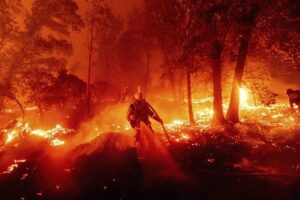
Cover image and logo used with permission by Anchorage Daily News
In addition, transportation, a place to go, job requirements, or inability to leave prior to the storm were some of the main reasons why people were unable to evacuate during Hurricane Katrina (Thiede & Brown, 2013). This lack of preparedness left many individuals and families to face the hurricane head on, with little-to-no support, placing many in danger and risk for their lives.
Disaster Preparedness Among Military Personnel
Because military families move frequently, the change in geographic region can affect how likely a natural disaster will impact them. Multiple family relocations and separations that lead to transitions in residence, communities, jobs, child care, health care, and schools can also impact the accessibility for military families to readily available resources; thus, influencing how they face particular experiences.
As part of the training military personnel receive, natural disaster and emergency preparedness occurs “synonymously with military readiness”, annually in April and September to increase individual and organizational preparedness (Cronk, 2015).
Although all military service members receive adequate training, some personnel and families are at greater risk of experiencing the negative effects of a natural disaster. Military personnel with low income and less education mirror the civilian population in limited preparedness and poses the greatest threat (Annis et al., 2016). In addition, individuals, and families with a disability and/or health concern face greater threats following a disaster event (Burke, Bethel, & Britt, 2012).
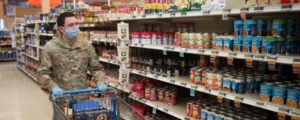
Cover image and logo used with permission by Ready.gov
Individual and Family Resilience Skills
While my husband and I were not prepared physically for Hurricane Arthur (i.e., no emergency kit, or essential items on hand), I do believe that our resilience skills helped us to adapt to the adversity, and limited the effects of disaster-related stress.
As military family service providers (MFSPs), we can further assist military families with disaster preparedness through education and awareness on the natural disasters in the area they move to and how they can best prepare utilizing their own skills or by fostering new techniques of building resiliency. This is especially important given the current pandemic our world is facing as many families may already be in a fragile state.
So, how can we as professionals help military families prepare or ready themselves for one more challenge?
In collaboration with MFLN, Dr. Ann Masten contributed several pieces on resilience, including a webinar on “Nurturing Individual Resilience from a Multisystem Developmental Perspective ”. Given a resilience framework, Masten provides seven principles as a useful starting point for preparing military families for any kind of disaster.
Bolded below are Masten’s suggestions as well as specific strategies for applying the principles in working with military families.
1. The nature of the threat must be considered. For example, consider assessing what the current challenges military personnel and their families are facing. How might the pile up of many threats (e.g., low income, child with a major illness) create increased risk for families facing a natural disaster?
2. Developmental timing of experiences will influence the reactions of all individuals, including children, parents, and other adults. As a MFSP, you can help shift families’ perceptions and thoughts, or increase resources, roles, and responsibilities, to influence their reactions to catastrophes. For instance, you might help military youth shift their negative perspective on a disaster event by allowing them to identify their personal skills (e.g., communication), and how they might utilize them in a disaster event.
3. Experiences and responses of individuals will be influenced by the functioning of the systems in which their lives are embedded, and particularly by the behavior of people they trust or who function as a secure base in an attachment relationship. For instance, MFSPs can support military parents and families by providing education on ways to build family closeness or cohesion through secure attachment relationships with their children. This might involve workshops on how parents behave in their everyday contexts, as “their behavior itself will serve to model, exacerbate, or buffer the impact of disaster on children” (Masten & Obradovic, 2008, p. 12).
4. The functioning of individuals in families, peer groups, and larger systems will be influenced by their perceptions of the safety of other system members, particularly by the well-being of people in their close attachment relationships. In preparing military families for natural disasters, you will want to consider the physical and mental health of all family members. For example, you might gather all family members together to create an emergency plan to support family effectiveness. Each family member could brainstorm supports, such as shelter, food, or a religious system.
5. It is important to identify the most likely first responders for vulnerable populations. In the case of children, for example, parents, teachers, and day-care providers are the most likely first responders. Disaster planning must consider this simple reality.
6. Preparations and interventions need to consider the interdependence and multiplicity of systems of human lives. In other words, it is unlikely that there is a “one size fits all model” for resilience, given the enormous diversity and complexity of individuals, families and communities involved. Thus, we must consider adapting and restructuring preparation and intervention strategies to “fit” the individuals, families, and communities you serve as “family resilience is supported in turn by resilience in communities and societies” (Masten & Obradovic, 2008, p. 12).
7. All first responders need to know what responses to disaster can be expected at all levels of human development and the best practices for psychological and physical first aid. It will be important for first responders to know what to expect and have some basic strategies and guidelines for reducing threat impact and promoting resilience. For example, MFSPs could take time after disasters to debrief and update emergency plans with military families. Or they might create a discussion for what families would have done during a disaster in another community.
Keep the conversation going; please share your comments and thoughts on disaster preparedness below.
For additional information and resources on disaster preparation for military families, check out MFLN’s Military Family Readiness Academy webinar series on Disaster and Hazard Readiness Foundations. We’ve compiled an extensive resource list for your reference throughout the three-part webinar series. Moreover, MFLN’s Community Capacity Building team put together a list of resources that you can use professionally to help military families in the event of an emergency or natural disaster. Finally, our OneOp Family Transitions team, in partnership with MFLN’s Family Development team and Sesame Street, are offering a free webinar, entitled “Sesame Street and You: Caring for Each Other During COVID-19 and Other Emergencies ” on September 30th – be sure to register today or view the recording after the event!
References
1. Annis, H., Jacoby, I., & DeMers, G. (2016). Disaster Preparedness Among Active Duty Navy, Retirees, Veterans, and Dependents. Prehospital and disaster medicine, 31(2), 132.
2. Bullock, J. A., Haddow, G. D., & Coppola, D. P. (2017). Introduction to emergency management. Butterworth-Heinemann.
3. Burke, S., Bethel, J. W., & Britt, A. F. (2012). Assessing disaster preparedness among Latino migrant and seasonal farmworkers in eastern North Carolina . Int J Environ Res Public Health, 9(9),3115-3133.
4. Cronk, T. M. (2015, April 1). Disaster Preparedness Mirrors Military Readiness, Official Says. Retrieved from https://www.defense.gov/Explore/News/Article/Article/604395/disaster-preparedness-mirrors-military-readiness-official-says/
5. FEMA (Federal Emergency Management Agency). (2014, March 13). National Preparedness Report. Retrieved from https://www.fema.gov/media-library-data/1409688068371-d71247cabc52a55de78305a4462d0e1a/2014_NPR_FINAL_082914_508v11.pdf
6. Kyne, D., Cisneros, L., Delacruz, J., Lopez, B., Madrid, C., Moran, R., … & Silva, M. F. (2020). Empirical evaluation of disaster preparedness for hurricanes in the Rio Grande Valley . Progress in Disaster Science, 5, 100061.
7. Masten, A., & Obradovic, J. (2008). Disaster preparation and recovery: Lessons from research on resilience in human development . Ecology and Society, 13(1), doi: 10.5751/ES-02282-130109
8. Pearce, Laurie. 2000. Chapter 2, pp. 2–5, in An Integrated Approach for Community Hazard Impact, Risk and Vulnerability Analysis: HIRV . Doctoral Dissertation, University of British Columbia.
9. Substance Abuse and Mental Health Services Administration (SAMHSA).(July 2017). Disaster Technical Assistance Center Supplemental Research Bulletin Greater Impact: How Disasters Affect People of Low Socioeconomic Status. Retrieved from https://www.samhsa.gov/sites/default/files/programs_campaigns/dtac/srb-low-ses.pdf
10. Sury, J., Chandler, T., Herrera, C., Bhaskar, S., Sehnert, E., Martinez, S., . . . Redlener, I. (2016, May 12). The American Preparedness Project: Where the U.S. public stands in 2015 (Research Brief 2016_2). New York, NY: National Center for Disaster Preparedness at Columbia University’s Earth Institute. doi: 10.7916/D84Q7TZN. Retrieved from https://academiccommons.columbia.edu/catalog/ac:198722
11. Thiede, B. C., & Brown, D. L. (2013). Hurricane Katrina: Who stayed and why? Population Research Policy Review, 32, 803–824. doi: 10.1007/s11113-013-9302-9
Writers Biography
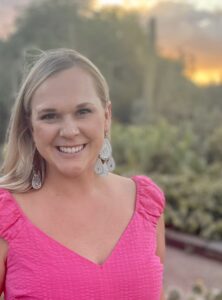 Jenny Rea, Ph.D., is a military spouse and mom of four kiddos under six years. Jenny consults with OneOp and is an Assistant Professor of Practice in the Department of Human Services and Director of the Certificate in Military Families at the University of Arizona.
Jenny Rea, Ph.D., is a military spouse and mom of four kiddos under six years. Jenny consults with OneOp and is an Assistant Professor of Practice in the Department of Human Services and Director of the Certificate in Military Families at the University of Arizona.

